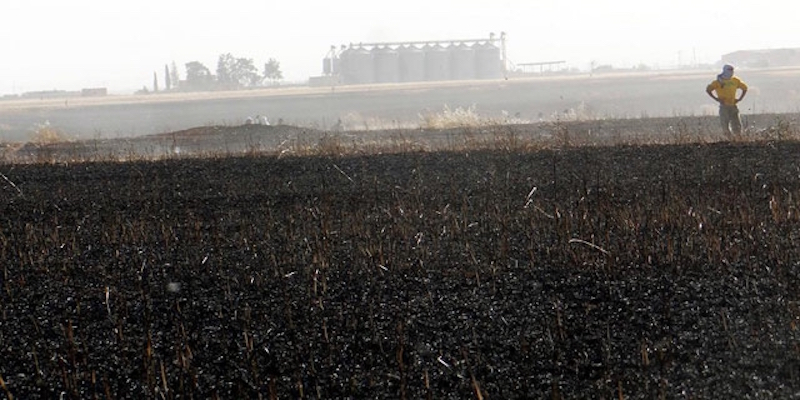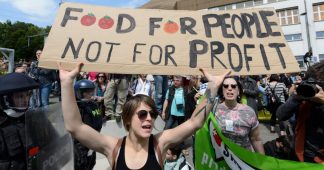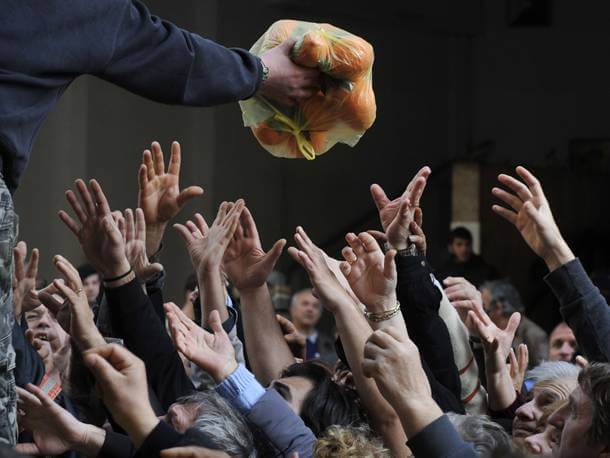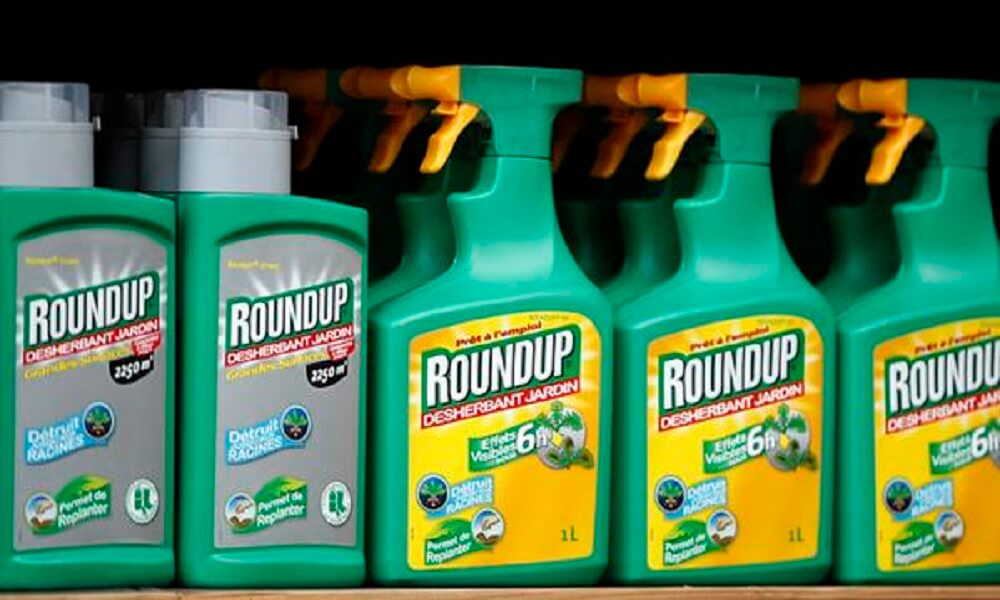One of eight people in US is food insecure
By Shelley Connor
6 May 2017
A report released by Feeding America on May 4 reveals that one out of every eight people, and one out of every six children, did not consistently have access to food in 2015, the most recent year for which data is available. While there has been an overall decline over the past several years in food insecurity rates, hunger and poverty levels have not declined to pre-recession levels, the report states.
Moreover, the gap between income and the money needed to buy adequate food for the millions of people classified as food insecure is growing. And the existing government food programs, increasingly starved of funding, are scandalously inadequate to meet the immense social need.
The report is a further exposure of the government/media narrative that the US has recovered from the Great Recession and, as former President Barack Obama said at the end of 2015, “things are pretty great in America.” Obama, of course, was speaking for his real constituency—Wall Street and the wealthy, who monopolized an even greater share of the national wealth thanks to his right-wing policies.
Donald Trump is taking up where Obama left off, plundering the economy and enriching the financial aristocracy even more shamelessly. With profits, stock prices and the personal fortunes of the rich at record levels, the ongoing hunger crisis stands as an unanswerable indictment of the capitalist system.
Using United States Department of Agriculture (USDA) data, Feeding America, a nonprofit that operates food banks, mapped food insecurity throughout each county and congressional district in the United States. The compiled statistics offer a sobering insight into the living standards of large sections of working class and lower-middle class Americans:
* In 2009, the year after the Wall Street crash, some 50 million US residents were food insecure. While that number fell to 42 million in 2015, the budget shortfall for food insecure individuals averaged $527 a year. This represents an increase of 13 percent, adjusted for inflation, since 2008.
* Children are more vulnerable to hunger than the general population. On average, 21 percent of children across all US counties are food insecure, compared to 14 percent of the general population. Some 41 percent of the children in Issaquena County, Mississippi are food insecure, and in 14 counties, over 100,000 children cannot expect consistent meals.
* Twenty six percent of food insecure individuals nationwide are unlikely to qualify for government nutrition programs such as the Supplemental Nutrition Assistance Program (SNAP, better known as food stamps), Women Infants and Children (WIC) and free or reduced-price school meals. In 76 US counties, the majority of food insecure individuals are likely to be ineligible for government assistance. In Douglas County, Colorado, near Denver, about two-thirds of the county’s 28,280 food insecure individuals are unlikely to qualify for government nutrition aid.
One in four food insecure individuals report that they applied for government assistance and were denied.
This is no mystery given that in many states a family of four has to earn less than $31,980 a year to qualify for food stamps. In other words, the family has to be living in the most dire poverty.
* Millions of people with jobs are living in hunger. Some 57 percent of food insecure people earn more than the (absurdly low) federal poverty level.
* Eighty-nine percent of the counties with the highest rates of food insecurity are located in the South.
* Rural counties make up 63 percent of all US counties, but account for 76 percent of the counties facing the highest rates of food insecurity.
However, while urban counties have lower rates of food insecurity, many have huge numbers of people living with hunger. Los Angeles County has a relatively “low” rate of food insecurity at 12 percent, but it is home to 1.2 million food insecure individuals, including 480,000 children. The counties with the highest number of food insecure people are New York, Los Angeles, Harris (Houston), Cook (Chicago), Maricopa (Phoenix), Dallas, San Diego, Wayne (Detroit), Tarrant (Fort Worth) and Philadelphia.
Diana Aviv, CEO of Feeding America, characterized the report as “grim news.” She continued: “It is disheartening to realize that millions of hardworking, low-income Americans are finding it increasingly difficult to feed themselves and their families at a time that our economy is showing many signs of improvement…”
Widespread and entrenched hunger in the richest country in the world is not the result of cosmic forces or an act of God. It is the product of deliberate policies carried out by both parties, acting in the interests of the ruling corporate-financial elite. The SNAP program was cut repeatedly under the Obama administration, including the $8.7 billion reduction Obama signed into law in February of 2014, stripping more than 500,000 people of food stamp benefits.
One day after Feeding America issued its report, Trump signed into law a bipartisan budget measure extending funding of the federal government through the end of the 2017 fiscal year, September 30, which includes a further $2.4 billion cut in food stamps. The same measure allocates an additional $15 billion for the military over the next five months plus $1.5 billion more to further militarize the United States’ southern border. The Democrats hailed the measure as a victory for the people and defeat for Trump.
The $16.5 billion combined allocation for war abroad and the war on immigrants at home would go a long way in covering what Feeding America calls the annual “food budget shortfall” for America’s food insecure population—estimated at $22.3 billion.
If that full amount were deducted from the net worth ($81 billion) of America’s richest billionaire, Bill Gates, the computer mogul would still be left with nearly $60 billion. Speculator George Soros, the 19th richest American, could cover the hunger deficit and still have a cool $3 billion to spare.
A social system that condemns millions to hunger in order to sustain the meaningless and corrupt lifestyles of a new aristocracy is doomed. It deserves to perish.











